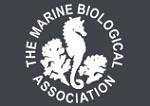APHOTOMARINE
An educational resource dedicated mainly to the photography
and diversity of marine life that can be found in coastal waters
and intertidal areas of Great Britain and Ireland by David Fenwick.

Dysidea fragilis
- with Acasta spongites 1
Goosebump sponge
Dysidea fragilis
- with Acasta spongites 2
Goosebump sponge
Dysidea fragilis
- with Acasta spongites 3
Goosebump sponge
Dysidea fragilis
- under rock / lowershore 1
Goosebump sponge
Dysidea fragilis
- under rock / lowershore 2
Images of this species were taken of it under a rock at extreme low water at Spit Point, Par, near St. Austell, Cornwall. It was found with Acasta spongites at Albert Pier reef, Penzance, Cornwall. 11.02.13.
Goosebump sponge
Dysidea fragilis
- under fiberglass sheet 1
Specimen above found under a sheet of fiberglass on an extra low spring tide at Helford, Cornwall. 08.04.16.
Goosebump sponge
Dysidea fragilis
- under submerged ledge 1
Goosebump sponge
Dysidea fragilis
- under submerged ledge 2
Goosebump sponge
Dysidea fragilis
- under submerged ledge 3
Specimen above found under a small submerged ledge beyond the low tide mark at Battery Rocks, Cornwall, 25.07.17.
Goosebump sponge
Dysidea fragilis
- parenchymella larva 1
Goosebump sponge
Dysidea fragilis
- parenchymella larvae 1
Goosebump sponge
Dysidea fragilis
- larvae undermicroscope 1
Goosebump sponge
Dysidea fragilis
- larvae 0.1mm division rule 1
Five parenchymella larvae were found on a piece of the sponge Dysidea fragilis, when it was examined under a microscope. The larvae were found on the sponge which was found in a crevice on the lowershore at Little London, near Marazion, Cornwall. 22.08.16. The larvae were excited and swam actively when illuminated. Thanks to Dr. Allen Collins of the Smithsonian museum of Natural History for identifying the larvae.
The barnacle, Acasta spongites, sometimes called the Sponge barnacle is associated with Dysidea fragilis and may be found with it.
APHOTOMARINE supports open source data recording and sharing for the benefit of wildlife, recorders, research, science and education. The project recommends the following websites and works with the following bodies and organisations.
A website based on Sponges of the British Isles 1992 Edition, revised and extended, 2007, by Bernard Picton, Christine Morrow & Rob van Soest. Without a shadow of a doubt the best online resource to sponges of Britain and Ireland.
The Marine Biological Association or MBA, based in Plymouth, is one of the world’s longest-running societies dedicated to promoting research into our oceans and the life they support. Since 1884 the MBA has been providing a unified, clear, independent voice on behalf of the marine biological community.It has a growing membership in over 40 countries.
The National Biodiversity Network or NBN is a charity that supports open source data sharing and recording supporting conservation, science and education. "Why do recorders need open source?". Simply because it supports the core values of wildlife recording and the free use of records and data over a very wide network that includes partners like the Natural History Museum.
The taxonomy used here is based on that of the following database, which is also used by the MBA, NHM and the NBN.
The World Register of Marine Species or WoRMS.

